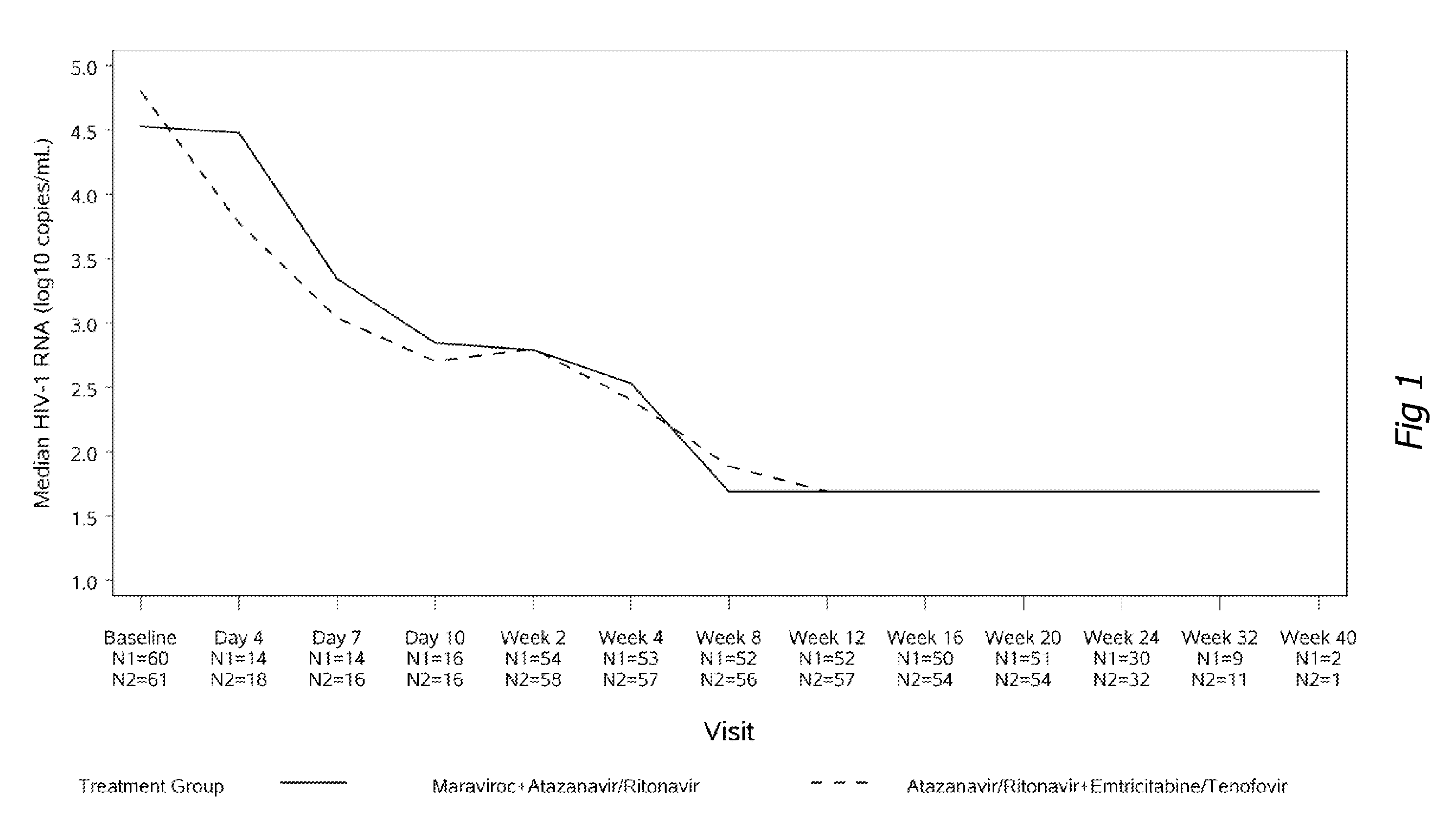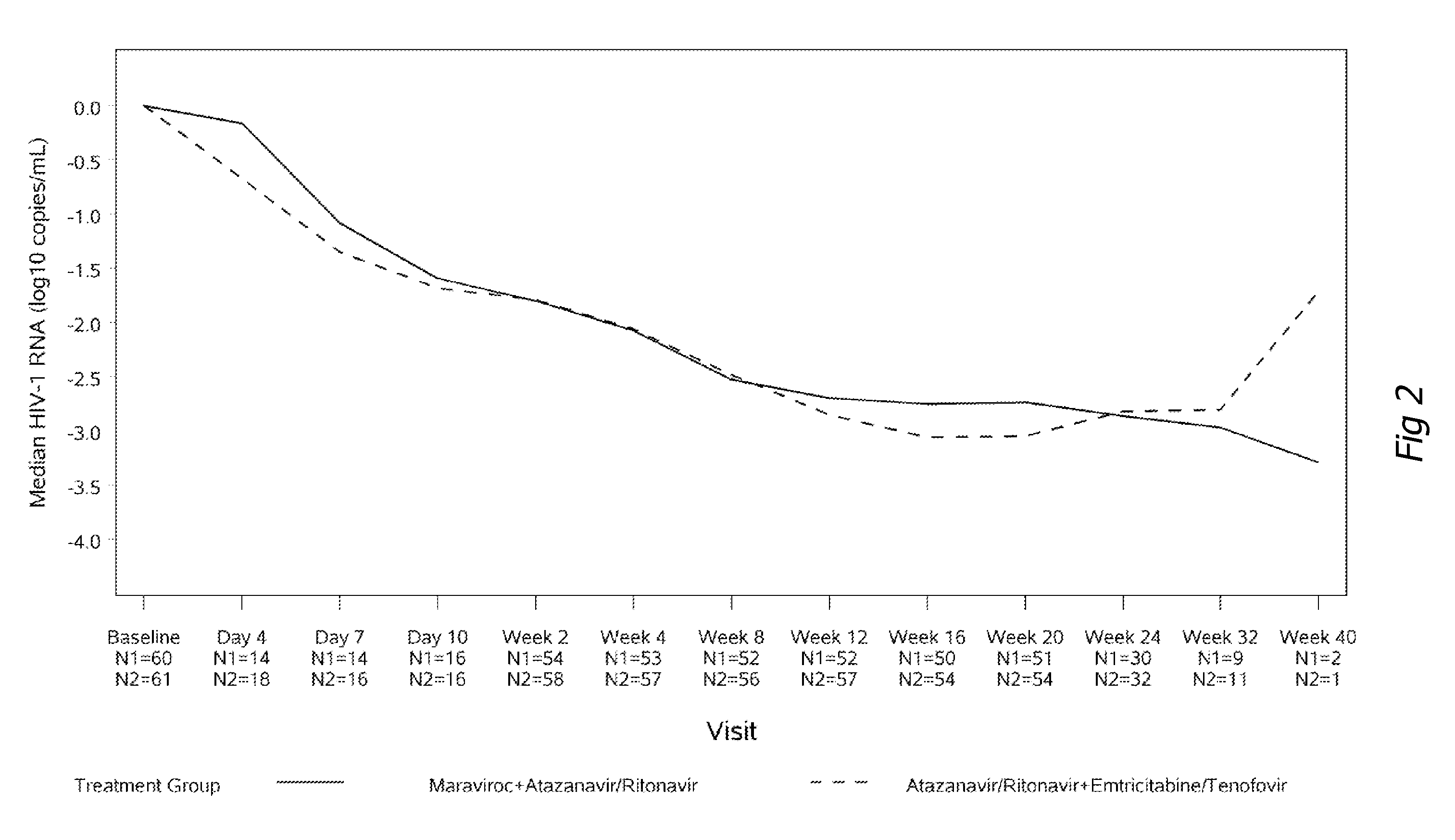Combination Therapy Comprising A CCR5 Antagonist, A HIV-1 Protease Inhibtior and a Pharmacokinetic Enhancer
a technology of tropic hiv1 and combination therapy, which is applied in the field of new combination therapy for tropic hiv1 infected treatmentnaive patients, can solve the problems of uncertainty, inability to predict whether, and inability to elucidate aspects in healthy volunteers
- Summary
- Abstract
- Description
- Claims
- Application Information
AI Technical Summary
Benefits of technology
Problems solved by technology
Method used
Image
Examples
example 1
Pharmacokinetics of Once Daily Maraviroc Co-Administered with Atazanavir / Ritonavir in Treatment-naïve HIV-infected Patients
[0113]Maraviroc (MVC) is primarily cleared by metabolism via CYP3A4. PK modelling studies (performed internally and not published) suggest that ATV / r, a potent CYP3A4 inhibitor, may make it possible to dose MVC once daily. In the pivotal Phase 3 MOTIVATE studies, where maraviroc was given once- or twice-daily with an optimized background regimen to treatment-experienced patients, the intersubject variability in the average concentrations (Cavg) of MVC was thought to be largely influenced by background therapy.
[0114]This PK substudy has been designed to examine the PK of MVC 150 mg once daily in combination with ATV / r, without confounding effects of other background therapy. Based on exposure-response analysis from the treatment-naive MERIT study, where maraviroc was dosed twice-daily with zidovudine / lamivudine, near maximal efficacy with MVC is achieved at a Cav...
example 2
[0117]To ascertain whether a once daily, nucleoside-sparing regimen using a CCR5 antagonist could be safely and efficaciously administered to HIV-positive patients infected with CCR5-tropic HIV, a randomized, controlled study is being conducted. In this study, HIV-positive patients who had never been treated before, who had a virus that used the CCR5 co-receptor and that did not have any resistance mutations were randomized to receive atazanavir (300 mg QD) and ritonavir 100 mg QD with either maraviroc (150 mg QD) or Truvada.
[0118]One hundred and twenty-one patients enrolled into the study; 60 in the maraviroc arm and 61 in the Truvada arm. Baseline characteristics were similar in patients in both treatment groups. Results after 24 weeks of observation are available and reported in FIGS. 1 to 6. The percentage of patients who achieved less than 400 and less than 50 copies / mL at week 24 (which are accepted treatment objectives of HIV therapy) were 93% and 90% (Truvada and maraviroc) ...
PUM
| Property | Measurement | Unit |
|---|---|---|
| Mass | aaaaa | aaaaa |
| Mass | aaaaa | aaaaa |
| Mass | aaaaa | aaaaa |
Abstract
Description
Claims
Application Information
 Login to View More
Login to View More - R&D
- Intellectual Property
- Life Sciences
- Materials
- Tech Scout
- Unparalleled Data Quality
- Higher Quality Content
- 60% Fewer Hallucinations
Browse by: Latest US Patents, China's latest patents, Technical Efficacy Thesaurus, Application Domain, Technology Topic, Popular Technical Reports.
© 2025 PatSnap. All rights reserved.Legal|Privacy policy|Modern Slavery Act Transparency Statement|Sitemap|About US| Contact US: help@patsnap.com



